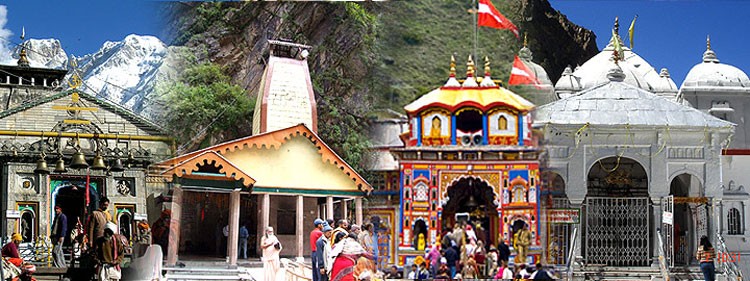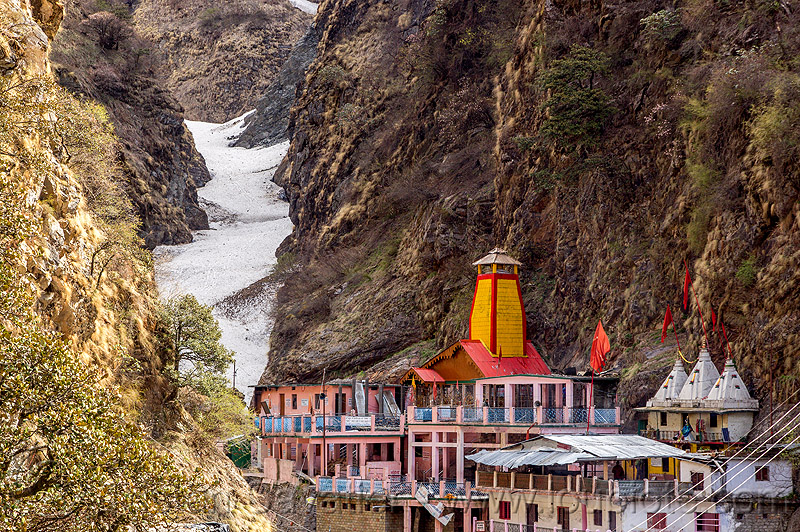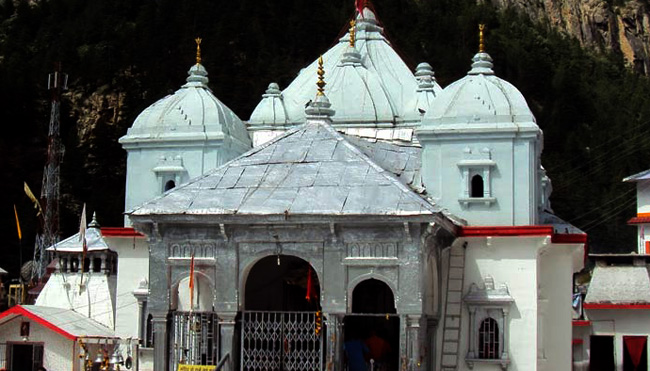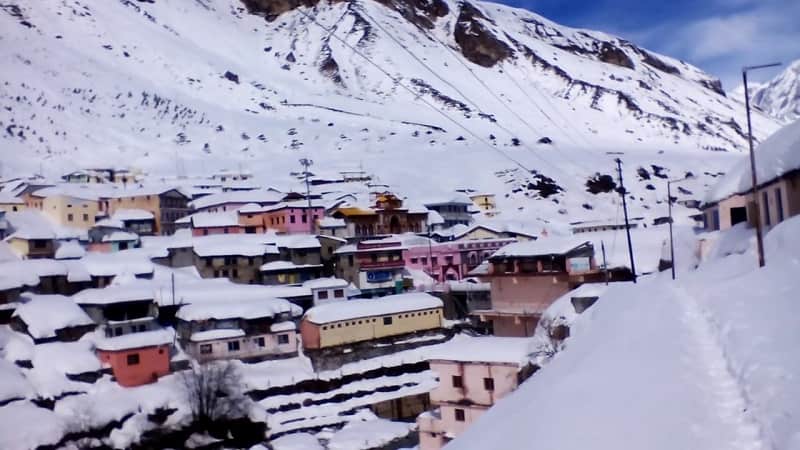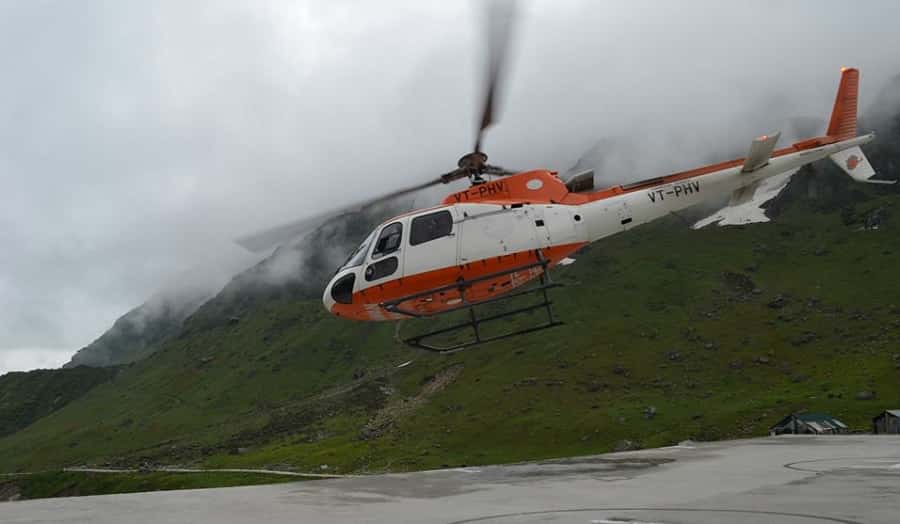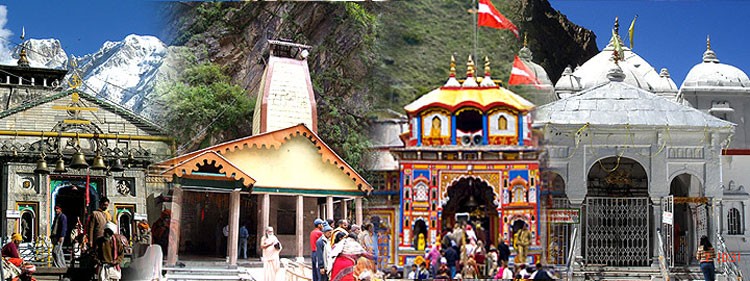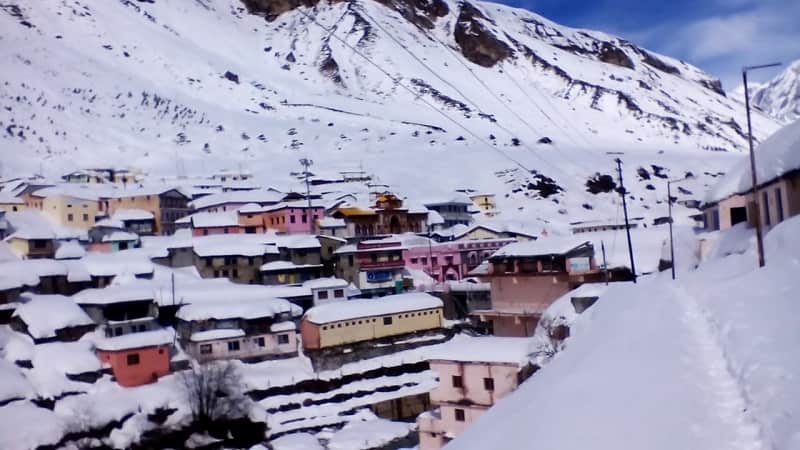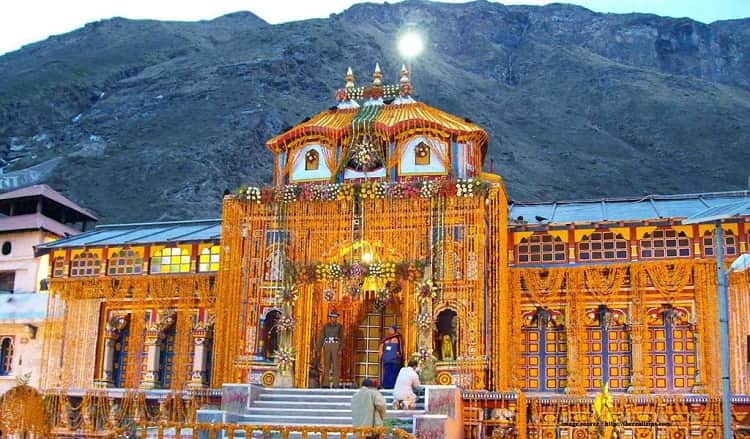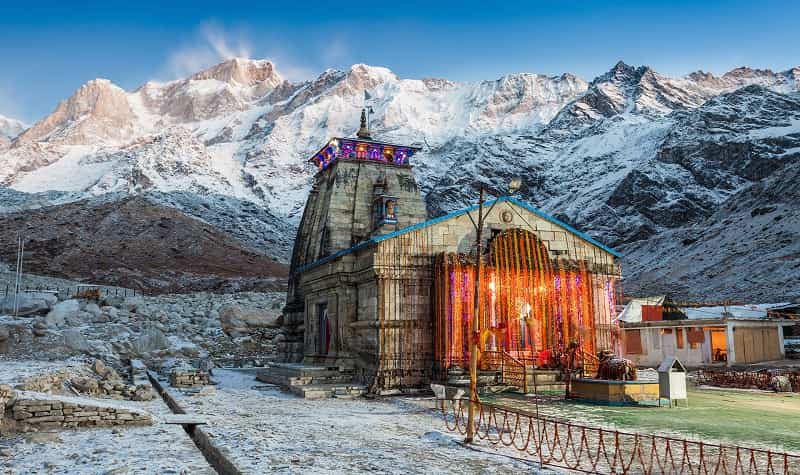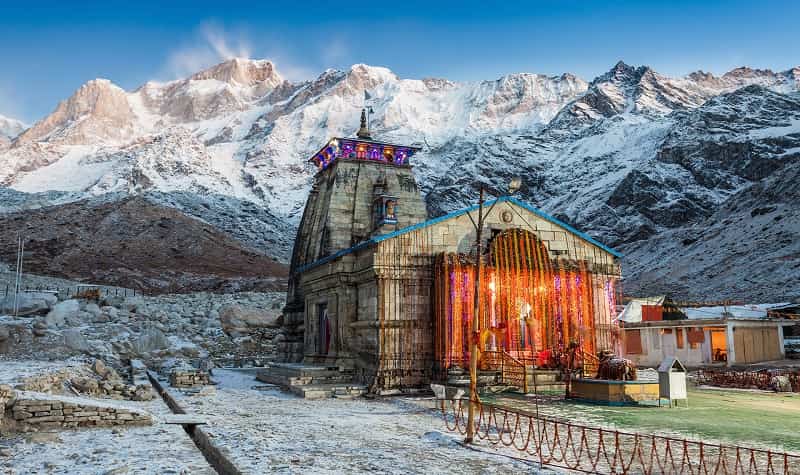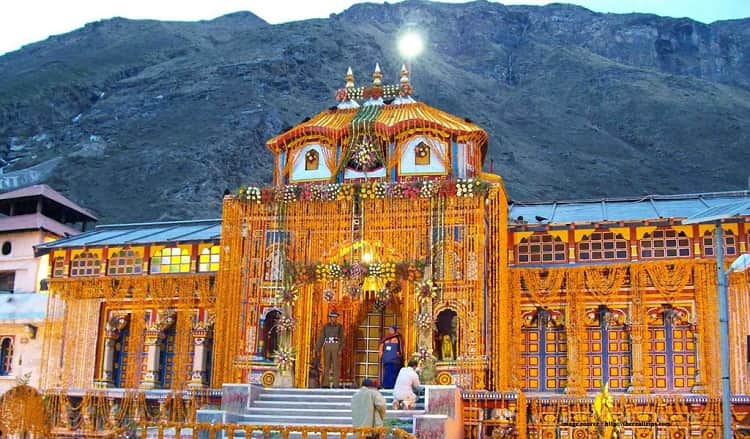Uttarakhand, a state in northern India, is regarded as a haven for divine mysticism and spirituality. It is the site of several ancient and revered temples dedicated to Lord Shiva, one of Hinduism’s most prominent and revered deities. Lord Shiva is revered as the destroyer of evil as well as the embodiment of ultimate reality and consciousness. Kedarnath, Tungnath, Rudranath, and Neelkanth Mahadev Temple are few among the most well-known Shiva temples in Uttarakhand. Millions of devotees and tourists from all over the world visit these temples to seek Lord Shiva’s blessings and to experience the spiritual energy that emanates from these sacred sites. Apart from their religious significance, these temples are also known for their architectural beauty and breathtaking natural surroundings, making them a popular destination for tourists seeking a mix of spirituality and scenic beauty. Book yourself a spiritual serene trip to the Devbhoomi with the Uttarakhand Tour Packages and usher in abundant blessings.
Exploring The Famous Shiva Temples in Uttarakhand
1. Rudranath Temple
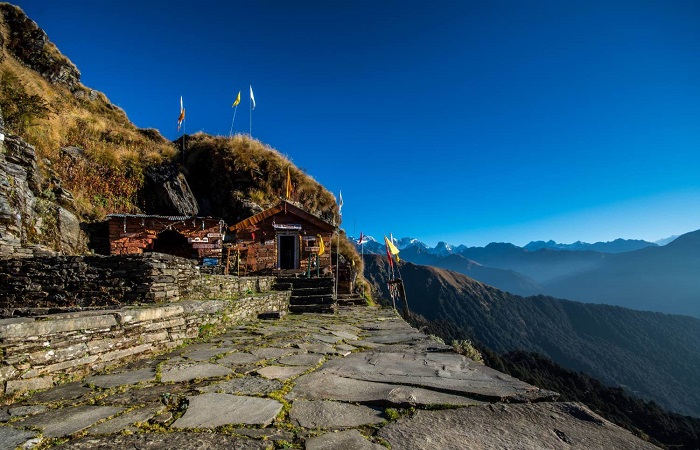
Rudranath Temple is an ancient Hindu temple dedicated to Lord Shiva located in Uttarakhand’s Chamoli district. It is one of the Panch Kedar and one of the holiest pilgrimage sites for Lord Shiva devotees. It is located at an elevation of 2,286 metres above sea level. The temple, which is surrounded by magnificent snow-capped Himalayan peaks, is thought to have been built in the 8th century AD. During the annual pilgrimage season, the main deity of the temple is a natural rock formation that resembles Lord Shiva’s face, which is adorned with a silver mask. The temple is only accessible by foot, and the trek to Rudranath is a demanding but rewarding experience for both devotees and trekkers. The trail winds through dense forests, scenic meadows, and streams, providing spectacular views of the Himalayan ranges. Aside from its religious significance, Rudranath Temple is also historically and culturally significant in the region, attracting visitors from all over the world.
2. Tungnath Temple
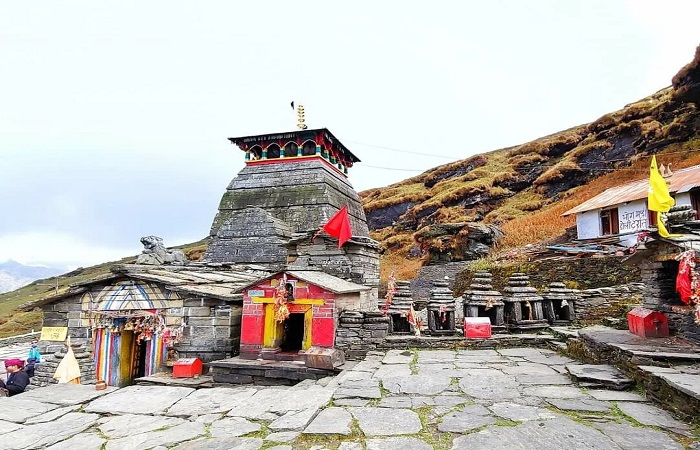
Tungnath Temple is a sacred Hindu shrine in the Uttarakhand district of Rudraprayag, India. It is one of the Panch Kedar and is located at an elevation of 3,680 metres above sea level, making it the world’s highest Shiva temple. The temple is dedicated to Lord Shiva and is thought to have been built in the 8th century AD. It is surrounded by magnificent snow-capped mountains and provides breathtaking views of the Himalayan ranges. The pilgrimage route to the temple is well-known for its scenic beauty. The trail is only accessible by foot and winds through lush green forests, meadows, and streams. Tungnath Temple is known for its unique architecture and intricate carvings in addition to its religious significance. The temple complex consists of a Mandapa, a Garbhagriha, and a Sanctum Sanctorum, all of which are built in the traditional North Indian style. Tungnath Temple provides a glimpse into Uttarakhand’s rich cultural heritage.
3. Kedarnath Temple
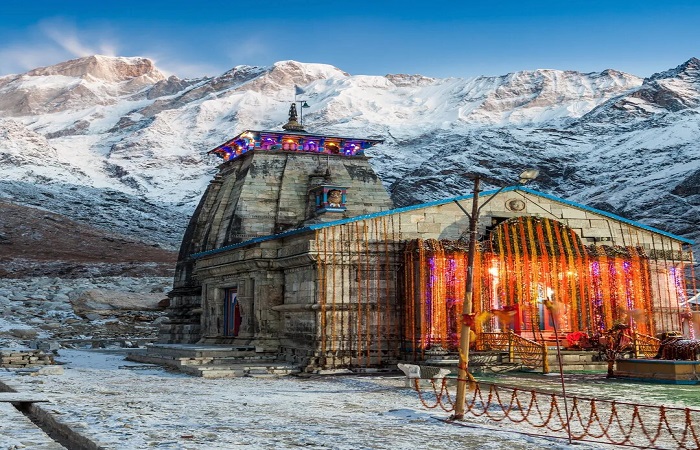
Kedarnath Temple is a sacred Hindu shrine in the Uttarakhand district of Rudraprayag, India. It is one of the Panch Kedar and is located at an elevation of 3,583 metres above sea level, making it one of Lord Shiva’s 12 Jyotirlingas. The temple is dedicated to Lord Shiva and is thought to have been built in the 8th century AD. It is surrounded by snow-capped mountains and provides spectacular views of the Himalayan ranges. The main temple, a Nandi statue, a Garbhagriha, and a Mandapa are all built in the traditional North Indian style. The temple’s main deity is a conical-shaped lingam, which is revered as one of Lord Shiva’s 12 Jyotirlingas. The pilgrimage route to Kedarnath is well-known for its scenic beauty. The trail is only accessible by foot or helicopter and winds through rugged terrain, glaciers, and snow-covered mountains.
4. Baleshwar Temple
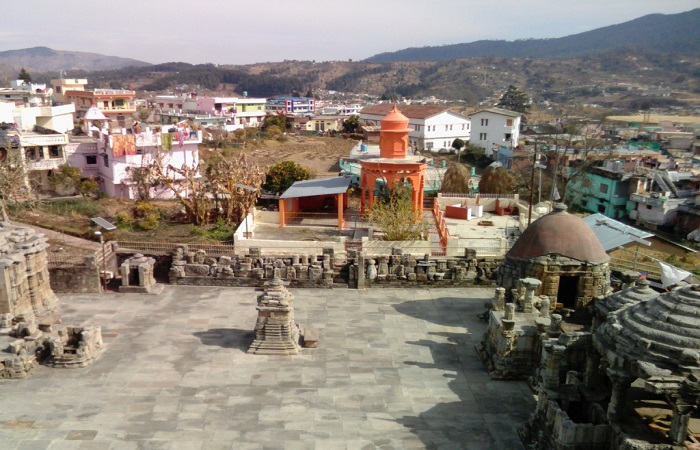
Baleshwar Temple is a well-known Hindu temple in Uttarakhand’s Champawat district. It is dedicated to Lord Shiva and is thought to have been built by the Katyuri dynasty in the 10th century AD. The temple is constructed in the Nagara architectural style and is adorned with intricate carvings and sculptures. The temple’s main deity is a Shiva lingam made of black stone that is said to have miraculous powers. There are several smaller shrines dedicated to other deities, such as Ganesha, Nandi, and Parvati, within the temple complex. The complex also includes a large courtyard, which hosts a variety of cultural events and festivals throughout the year. Baleshwar Temple is a significant religious site for Hindus, and devotees from all over the country come to seek Lord Shiva’s blessings. The temple’s serene and tranquil surroundings make it an ideal place for meditation and introspection.
5. Vishwanath Temple
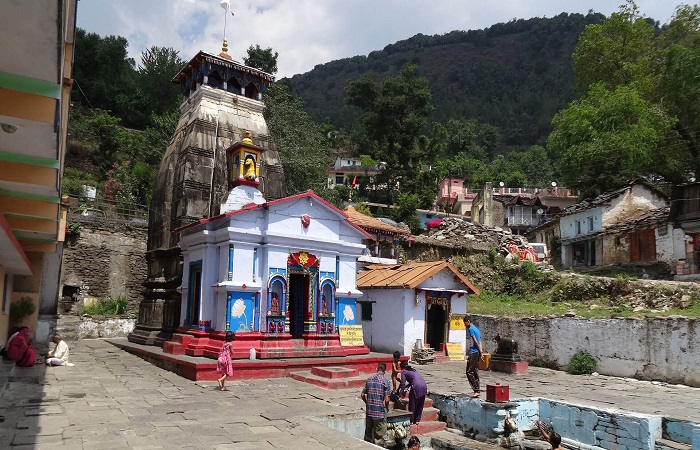
Vishwanath Temple is a popular Hindu temple in Guptkashi, Uttarakhand, India. The temple is dedicated to Lord Shiva and is one of the region’s most sacred shrines. According to legend, the Pandavas built the temple during the Mahabharata period. Adi Shankaracharya, a famous Hindu saint and philosopher, built the current temple structure in the 8th century. The main attraction of the temple is the Shivling, which is believed to be one of the 12 Jyotirlingas, or sacred objects of worship in Hinduism. Parvati, Ganesha, and Kartikeya are among the other deities housed in the temple. The temple attracts a large number of devotees all year, especially during the Maha Shivaratri festival. The temple is also a popular rest stop for pilgrims en route to the Kedarnath Temple, another important pilgrimage site in Uttarakhand. The Vishwanath Temple’s serene surroundings, intricate architecture, and rich history make it a must-see destination for tourists and spiritual seekers alike, as this is a soul-changing experience.
6. Binsar Mahadev Temple

Binsar Mahadev Temple is an ancient Hindu temple located in Binsar, Uttarakhand, India. The temple is dedicated to Lord Shiva and is located in the dense forests of the Binsar Wildlife Sanctuary at an elevation of 2,480 metres above sea level. The temple is known for its unique architecture and exquisite stone carvings. The Pandavas built the temple during their exile, according to local legend. Suryakund, the temple’s sacred pond, is also said to have medicinal properties. The temple is a popular pilgrimage destination that attracts devotees from all over the country, particularly during the annual Binsar Mahadev Fair. The fair, which takes place in June, commemorates Lord Shiva and Parvati’s marriage. The Temple’s tranquil surroundings, spiritual ambiance, and natural beauty make it a must-see destination and it is truly a soul-enhancing experience.
7. Neelkanth Mahadev
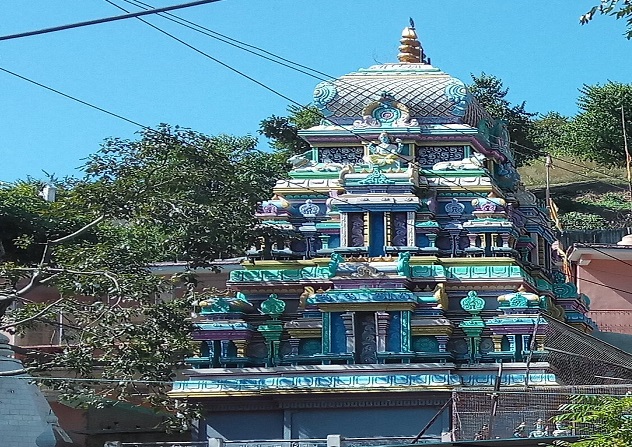
The Neelkanth Mahadev Temple is a Hindu temple in the Indian state of Uttarakhand. It is located near the confluence of the Pankaja and Madhumati rivers at an elevation of 1,330 metres above sea level. The temple is dedicated to Lord Shiva, who is known as Neelkanth, which means “blue-throated” in Hindi. The temple is said to be the site where Lord Shiva ingested the poison created by the gods and demons churning the ocean, which turned his throat blue. The temple, which was built in the 17th century, is known for its stunning architecture and intricate stone carvings. The temple draws a large number of devotees, particularly during the Shravan month, which is considered auspicious for Lord Shiva’s worship. The temple is also a popular rest stop for pilgrims on their way to the nearby Kedarnath Temple. The serene surroundings, spiritual ambiance, and rich legendary history of this temple make it a pious and serene tourist destination, not only for devotees but also for travel enthusiasts.
8. Maha Mrityunjay Temple
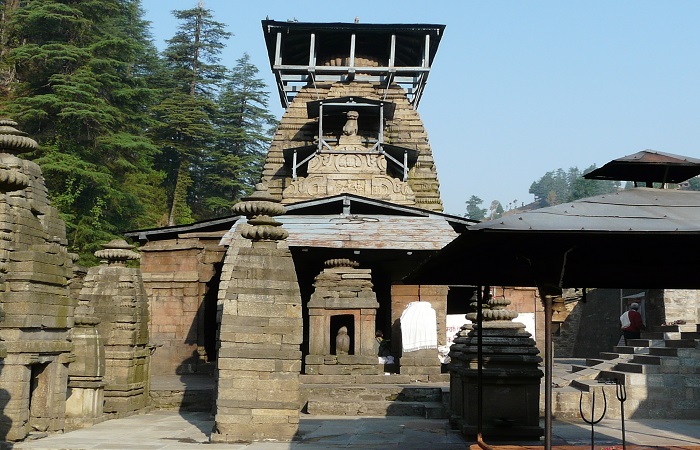
The Maha Mrityunjay Temple is a well-known Hindu temple in Jageshwar, a small town in the Indian state of Uttarakhand. The temple is dedicated to Lord Shiva and is well-known for its powerful Maha Mrityunjaya Mantra, which is used to protect against fear and illness. The temple is surrounded by towering deodar trees in the lush greenery of the Jageshwar valley. The temple’s architecture is noteworthy for its intricate carvings and sculptures depicting various deities and mythological stories. It is a popular pilgrimage site that attracts a large number of devotees throughout the year. The temple also hosts regular bhajan and kirtan sessions, which are popular with both devotees and tourists. Due to its natural surroundings, spiritual ambiance, and rich history, the temple has a very deep and serene influence on devotees, making it a must-visit destination for anyone interested in Hinduism or Indian culture. It is also believed to have healing and protective properties, and many devotees regard it as a symbol of hope and faith.
9. Mahasu Devta Temple
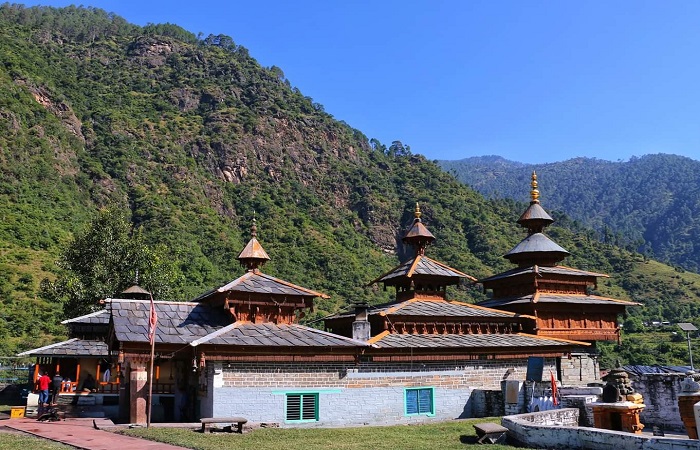
The Mahasu Devta Temple is a well-known Hindu temple in the Indian town of Hanol. The temple is a major pilgrimage site in the region and is dedicated to Lord Mahasu, an incarnation of Lord Shiva. The architecture of the temple is notable for its intricate wooden carvings depicting various deities and mythological stories. Furthermore, the temple has a unique “Biring” ritual in which people dance to the tune of traditional instruments and pray to Lord Mahasu. The Mahasu Devta Temple attracts both devotees and tourists who come to seek blessings and witness the region’s unique traditions and rituals. The temple also hosts the “Bissu Mela,” an annual fair that draws thousands of visitors from all over the region. The temple’s peaceful surroundings, spiritual ambiance, and rich history make it ideal for a Shiva devotee seeking protection through his blessings.
10. Lakhamandal Temple
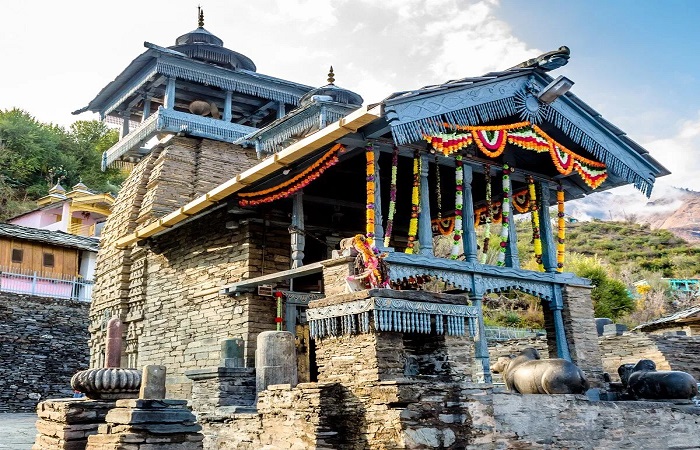
Lakhamandal Temple is an ancient Hindu temple in the Jaunsar-Bawar region of Uttarakhand. The temple is well-known for its rich history and intricate carvings dedicated to Lord Shiva. According to legend, the temple was the site of a great battle between the Pandavas and the Kauravas from the epic Mahabharata. The temple’s walls are adorned with intricate carvings depicting epic scenes. The temple’s architecture is notable for its intricate carvings and sculptures that are thought to be over 1000 years old. The temple also hosts a one-of-a-kind “Shivratri Mela,” which draws thousands of visitors from across the region. The Lakhamandal Temple is a popular destination for devotees and tourists seeking blessings and witnessing the region’s distinctive traditions and rituals. The peaceful surroundings, spiritual ambiance, and rich history of the temple make it a must-see for anyone interested in discovering Uttarakhand’s cultural heritage with a spiritual twist.
11. Baghnath Temple
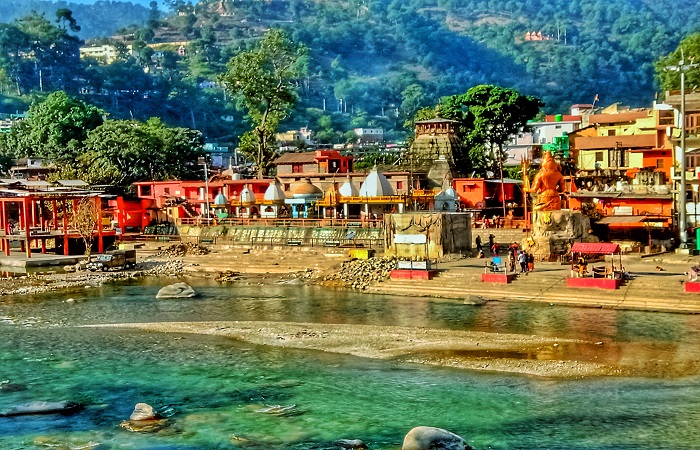
Baghnath Temple is an ancient Hindu temple in the Indian state of Uttarakhand’s town of Bageshwar. The temple, which is dedicated to Lord Shiva, is thought to be over 1000 years old. The architecture of the temple is notable for its intricate carvings and sculptures depicting various deities and mythological stories. The temple also has a sacred pool known as the “Bhagirathi Kund,” which is thought to have medicinal properties. The Baghnath Temple is a popular destination for both devotees and tourists who come to seek blessings and witness the region’s unique traditions and rituals. The temple also hosts an annual fair known as “Uttarayani Mela,” which attracts thousands of visitors from all over the region. The Baghnath Temple is regarded as a symbol of faith and devotion, and is an important pilgrimage site for Hindus in the region, as the tranquil surroundings, spiritual ambiance, and rich history give it a new enhanced spiritual inner feeling that touches the hearts of the devotees.
12. Tapkeshwar Mahadev
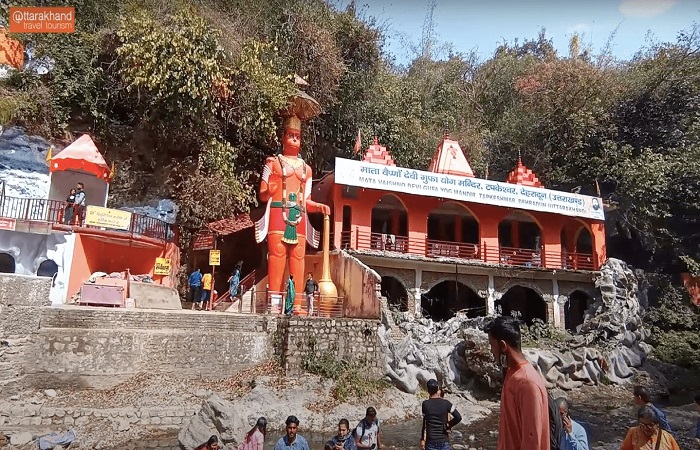
Tapkeshwar Mahadev Temple, located in the Indian state of Uttarakhand, is an ancient Hindu temple dedicated to Lord Shiva. The temple is known for its beautiful location and unique features and is located in the picturesque surroundings of Dehradun. The natural water dripping from the cave that covers the Shivling inspired the temple’s name. The water droplets are thought to have medicinal properties and can treat a variety of ailments. The cave itself is estimated to be over 500 feet long. The architecture of the temple is notable for its intricate carvings and sculptures depicting various deities and mythological stories. The temple also has a natural stream, known as the “Rivulet,” that runs through the complex and adds to the temple’s tranquil atmosphere. The atmosphere and tranquil surroundings of the Tapkeshwar Mahadev Temple provide devotees and tourists with a sense of abundance, and they can witness the region’s unique traditions and rituals.
13. Kamleshwar Mahadev Temple
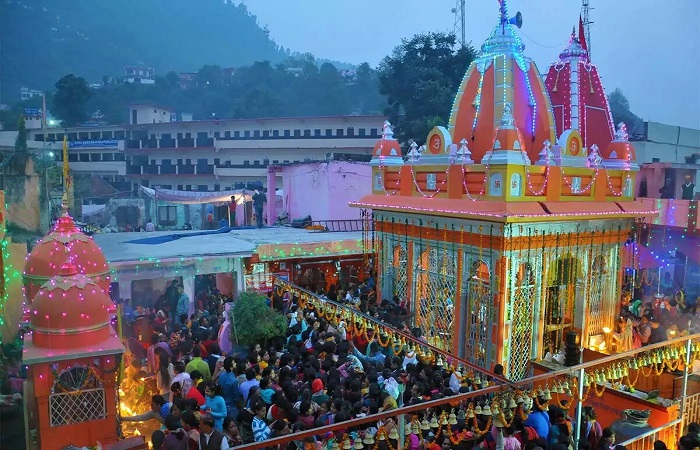
Kamleshwar Mahadev Temple is a popular Hindu temple in Srinagar, Uttarakhand. The temple, which is dedicated to Lord Shiva, is a popular pilgrimage site in the area. The temple’s architecture is noteworthy for its intricate carvings and sculptures depicting various deities and mythological stories. The temple also has a sacred pond called “Kamleshwar Kund,” which is said to have medicinal properties and can cure a variety of ailments. The Kamleshwar Mahadev Temple attracts both devotees and tourists who come to seek blessings and to witness the region’s unique traditions and rituals. The temple also hosts the annual “Bikhauti Mela,” which draws thousands of visitors from all over the region. The Kamleshwar Mahadev Temple has a serene setting and a deep spiritual ambiance, so devotees regard it as a symbol of faith and devotion, and it is a popular pilgrimage destination for Hindus in the region.
14. Tarkeshwar Mahadev Temple
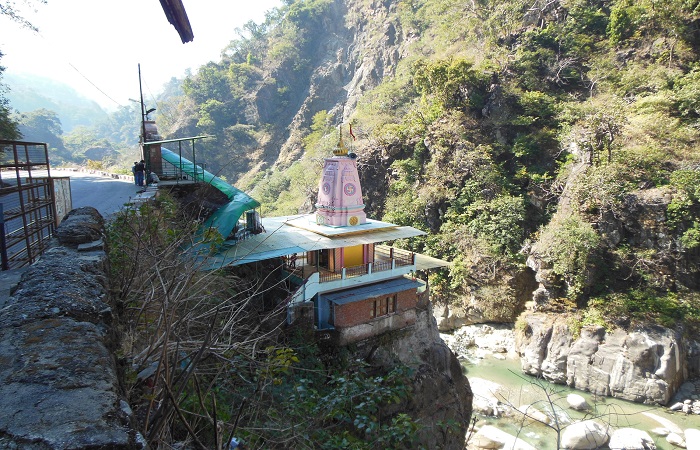
Tarkeshwar Mahadev Temple is an ancient Hindu temple dedicated to Lord Shiva in Tarkeshwar, Uttarakhand’s Puri district. The temple is known for its natural beauty and is located among dense forests. The architecture of the temple is notable for its intricate carvings and sculptures depicting various deities and mythological stories. The temple also has a sacred pond known as the “Kund,” which is said to have medicinal properties and can cure a variety of ailments. Legend says that Tarkeshwar was a demon who received the boon of immortality. He assassinated many saints and shattered the peace on Earth. Later, he was killed by Kartikeya, Lord Shiva’s son. Taking his final breath, the demon asked Lord Shiva for forgiveness, and the deity then said that the temple where he meditated would be worshipped by the people of Kalyug, and the location would be known as Tarkeshwar Mahadev. The temple is a popular destination for both devotees and tourists who come to seek blessings and witness the region’s unique traditions and rituals. The temple also hosts an annual fair known as the “Maha Shivratri Mela,” which attracts thousands of visitors from all over the region.
15. Triyuginarayan Temple
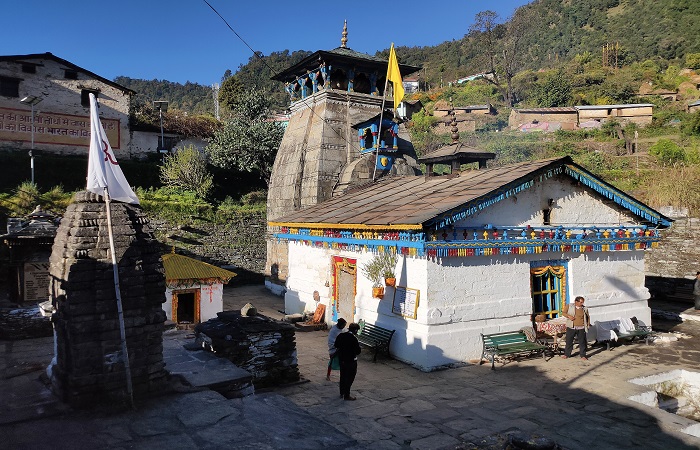
Triyuginarayan Temple is an ancient Hindu temple in the town of Triyuginarayan, Uttarakhand’s Rudraprayag district. The temple is dedicated to Lord Vishnu and is notable for its distinctive architectural style as well as its religious significance. The temple is well-known for the marriage of Lord Shiva and Goddess Parvati, which is said to have taken place here. The temple has a perpetual fire that is said to have been burning since the wedding ceremony. The architecture of the temple is notable for its intricate carvings and sculptures depicting various deities and mythological stories. The temple also has a sacred pond known as the “Kund,” which is said to have medicinal properties and can cure a variety of ailments. The Trijuginarayan Temple is a popular destination for both devotees and tourists who come to seek blessings and witness the region’s unique traditions and rituals.
16. Budha Kedar Temple
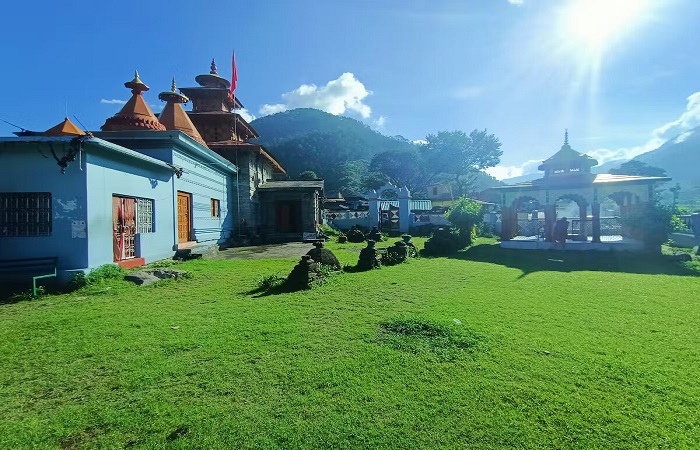
Budha Kedar is a Shiva-related holy site in Uttarakhand’s Tehri Garhwal district. It is said that the largest Shivling in North India can be found here. It is located at the confluence of the Bal and Dharam rivers. It is situated on steep hills and is surrounded by lush green deodar forests. The temple, surrounded by the mountainous Garhwal Himalayas and dotted with numerous huts and terraced fields for cultivation, gives visitors an insight into the lives of hill people. This is a nature lover’s paradise, with a wide variety of birds to see. The legend says that after the war the Pandavas wanted to clean their sins so they were advised by Rishi Bhalkhi at the Bhrigu parbat that they should meet an old man who had been meditating at the confluence of the two rivers, yet when they reached there the old man vanished and a huge Shivling appeared which they embraced and the erected the temple clearing their sins and achieved moksha.
17. Kapileshwar Mahadev Temple
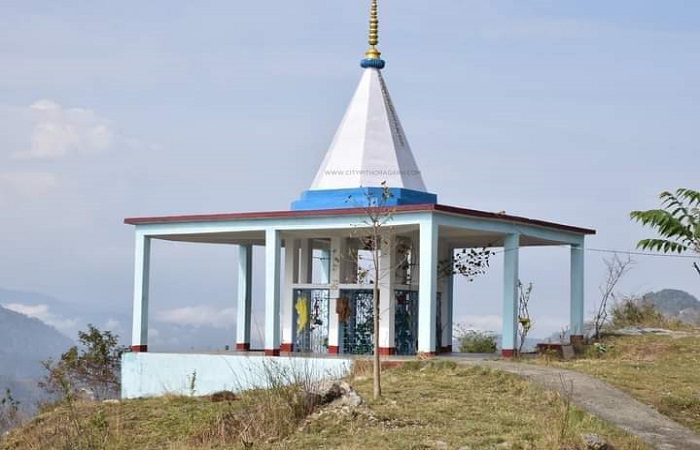
This Shiva temple is situated in the Pithoragarh district of Uttarakhand and is known for its religious importance. For Lord Shiva devotees, this is a pure and religiously significant location is one of the strongest and powerful Shiva temples in the region. Sage Kapila built this temple, which is located just above the villages of Tekari and Takaura. Every day, prayers and hymns are sung in strict accordance with the doctrines dictated by the texts, and devotees are welcome to pay their respects at the shrine. It has a divine effect on the visitors and proves the power of Shiva in a very different manner.
18. Agasteshwar Mahadev (Augustmuni) Temple
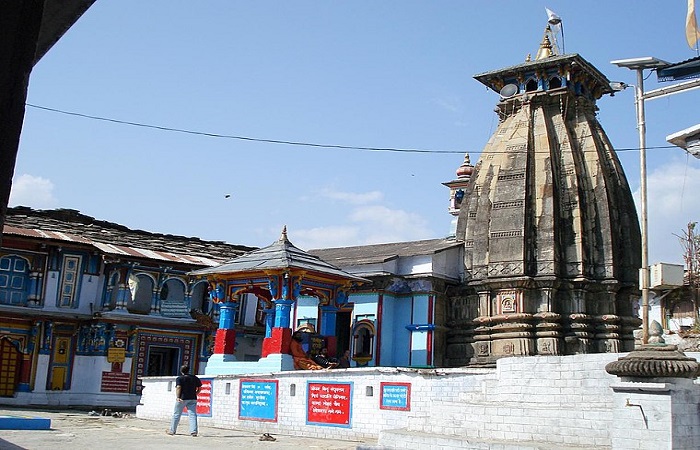
The Agasteshwar Mahadev Temple, also known as the Augustmuni Temple, is a Hindu temple in Uttarakhand’s Rudraprayag district. The temple is dedicated to Lord Shiva and is said to have been built by the sage Agastya. The temple is located on the banks of the Mandakini River, surrounded by stunning Himalayan mountains. It is an ancient temple and one of the most sacred shrines in the region. Lord Shiva, in the form of Agasteshwar Mahadev, is the temple’s main deity. Other Hindu deities represented in the temple include Lord Ganesha and Goddess Durga. Every year, a large number of devotees visit the Agasteshwar Mahadev Temple, particularly during the Maha Shivratri festival. The temple’s tranquil surroundings and ancient architecture make it a must-see for anyone seeking spiritual and natural solace.
19. Patal Bhuvaneshwar Temple
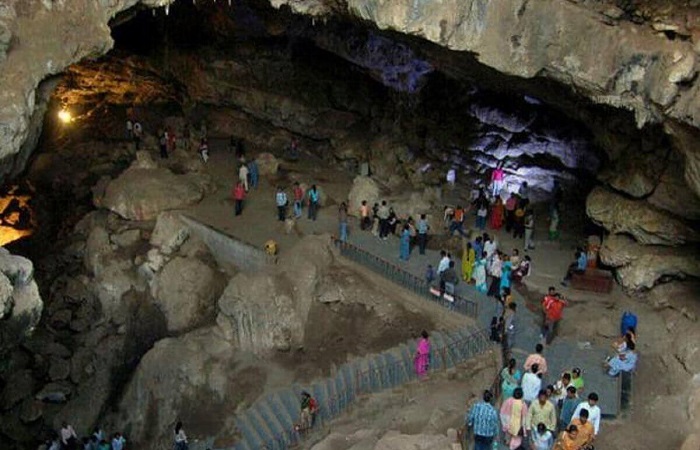
Patal Bhuvaneshwar Temple is a Hindu cave temple in Uttarakhand’s Pithoragarh district. The temple is dedicated to Lord Shiva and is considered one of Hindus’ most sacred pilgrimage sites. The temple is housed within a limestone cave, with numerous stalactites and stalagmites in the underground chamber. The cave is said to be linked to the fourteenth-century temple of Chandika Devi, which is located on the surface. The temple’s main deity is Lord Shiva in the form of Bhuvaneshwar. Other Hindu deities represented in the cave include Lord Ganesha, Goddess Parvati, and Lord Karthikeya. Every year, a large number of devotees flock to Patal Bhuvaneshwar Temple, particularly during the Shivratri festival. The temple’s unique location inside a cave, as well as the mystical atmosphere of the underground chamber, make it a must-see for anyone seeking spiritual solace.
20. Madhyamaheshwar Temple
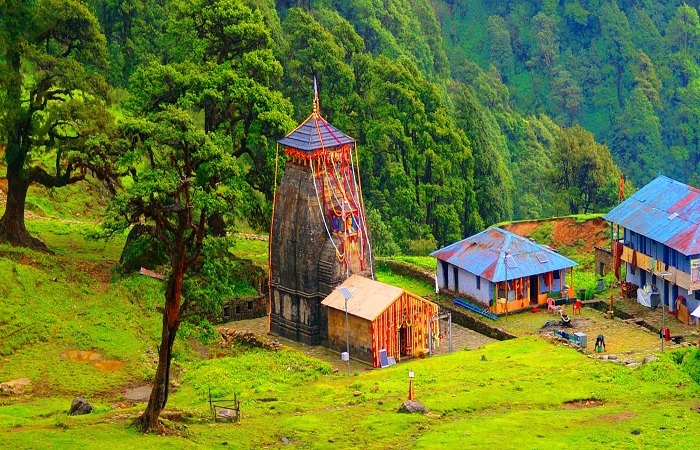
The Madhyamaheshwar Temple is a Hindu temple in Uttarakhand’s Rudraprayag district. The temple is dedicated to Lord Shiva and is one of the five temples included in the Panch Kedar pilgrimage circuit. The temple is located at an elevation of 3,497 metres above sea level and can only be reached by trekking for approximately 16 kilometres from Ransi village. The trek to the temple is difficult, but the natural beauty of the surrounding Himalayan mountains and valleys makes it worthwhile. According to the legend while hiding from the Pandava brothers Lord Shiva disguised as a bull and while Bhima tried to pull him out of the ground his body parts fell on different areas, here the naval fell and the temple was built by them. It is believed visiting this temple one can clear their life off from all the sins and can have eternal sanctity.

